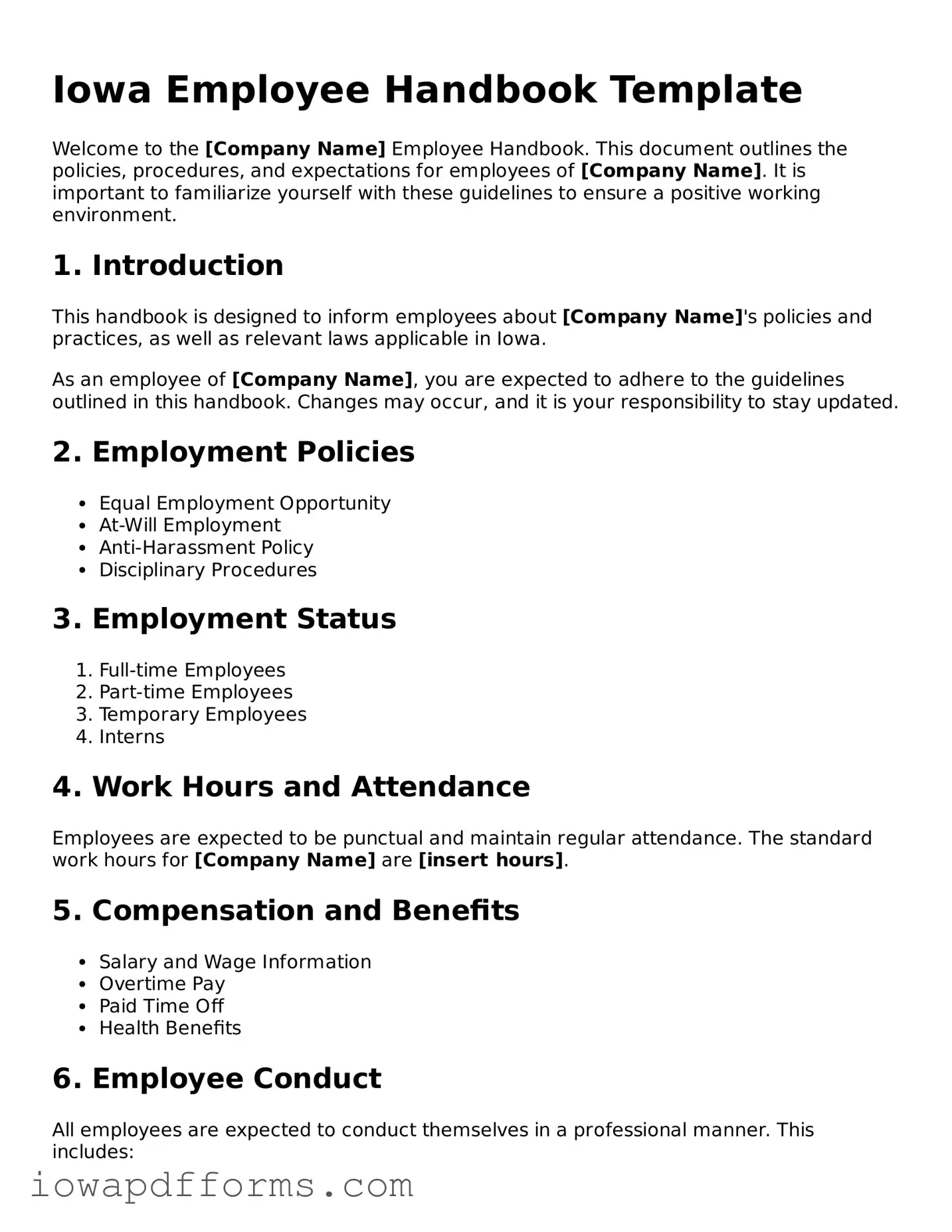The Iowa Employee Handbook form shares similarities with the Employee Manual. Both documents serve as a comprehensive guide for employees, outlining company policies, procedures, and expectations. An Employee Manual typically includes sections on workplace conduct, benefits, and grievance procedures. This ensures that employees have access to essential information about their rights and responsibilities, much like the Iowa Employee Handbook does.
Another document that resembles the Iowa Employee Handbook is the Orientation Guide. This guide is often provided to new hires during their onboarding process. It introduces them to the company culture, values, and operational procedures. Similar to the Employee Handbook, the Orientation Guide aims to equip employees with the necessary knowledge to navigate their new work environment effectively.
The Policy and Procedure Manual is yet another document akin to the Iowa Employee Handbook. This manual details specific policies related to various aspects of employment, such as leave policies, safety protocols, and employee conduct. While the Employee Handbook offers a broader overview, the Policy and Procedure Manual delves deeper into particular policies, ensuring clarity and compliance among staff.
The Code of Conduct is also comparable to the Iowa Employee Handbook. This document outlines the ethical standards and behavioral expectations for employees. It addresses issues such as harassment, discrimination, and conflicts of interest. By establishing a clear code, both documents aim to foster a respectful and productive workplace environment.
Job Descriptions can be seen as another related document. While the Iowa Employee Handbook provides general guidelines for all employees, Job Descriptions focus on the specific roles and responsibilities of individual positions. These descriptions clarify expectations and performance standards, helping employees understand their contributions to the organization.
For those in Texas looking to understand their vehicle registration needs, the Texas VTR 60 form is a crucial document that serves as an application for obtaining replacement license plates and/or registration stickers. This is particularly important if your license plate or sticker has been lost, stolen, or damaged. To streamline the process, you can access the necessary form through Texas Documents, ensuring that you complete the required steps efficiently.
The Benefits Summary document shares similarities with the Iowa Employee Handbook as well. This summary outlines the various benefits offered to employees, such as health insurance, retirement plans, and paid time off. While the Employee Handbook may touch on these benefits, the Benefits Summary provides a more detailed breakdown, helping employees make informed decisions about their options.
The Training Manual is another document that parallels the Iowa Employee Handbook. This manual typically outlines the training programs and resources available to employees. It provides guidance on skill development and career advancement opportunities. Both documents emphasize the importance of continuous learning and professional growth within the organization.
Finally, the Exit Policy document is relevant in this context. This document details the procedures and protocols for employees who are leaving the company, whether voluntarily or involuntarily. It addresses topics such as final pay, benefits continuation, and return of company property. Like the Iowa Employee Handbook, the Exit Policy aims to ensure a smooth transition for both the employee and the organization.
